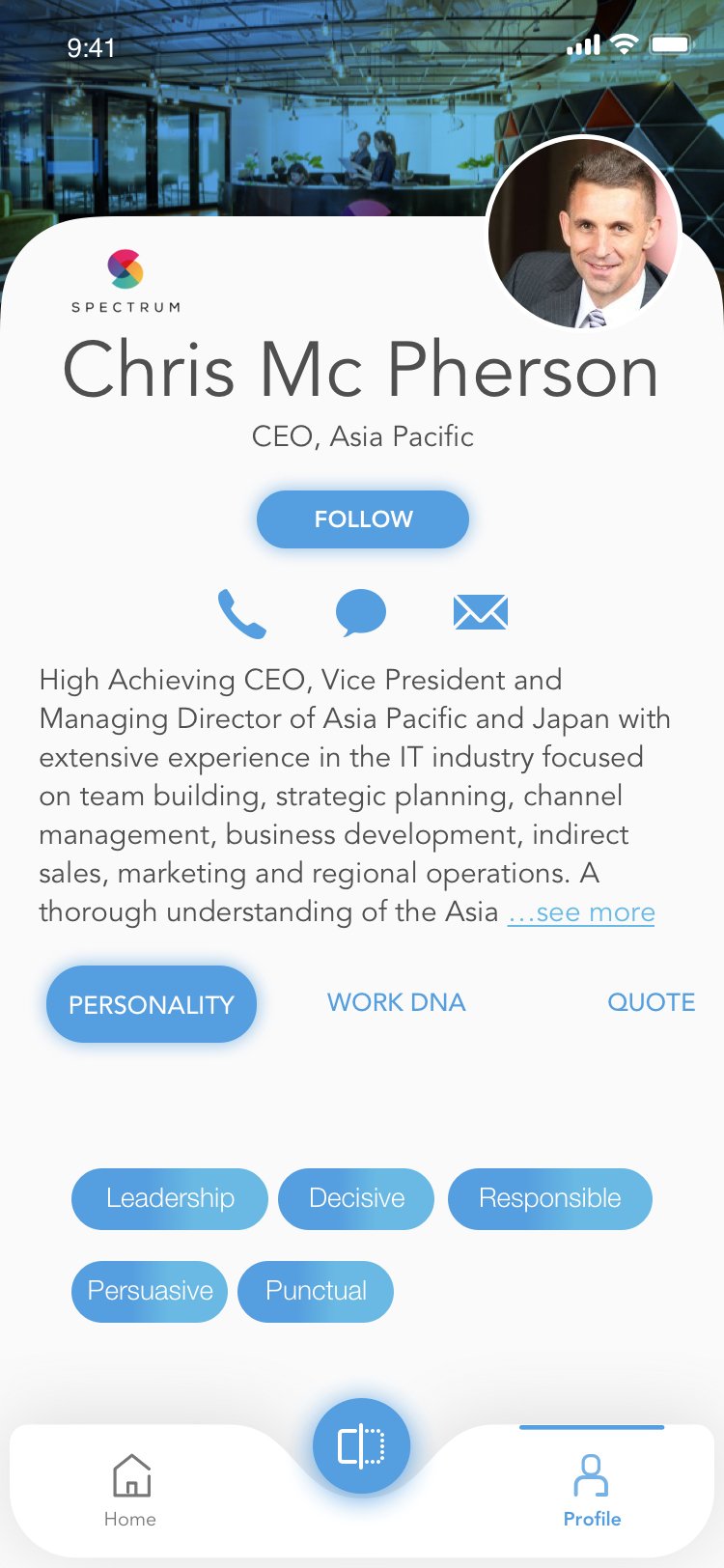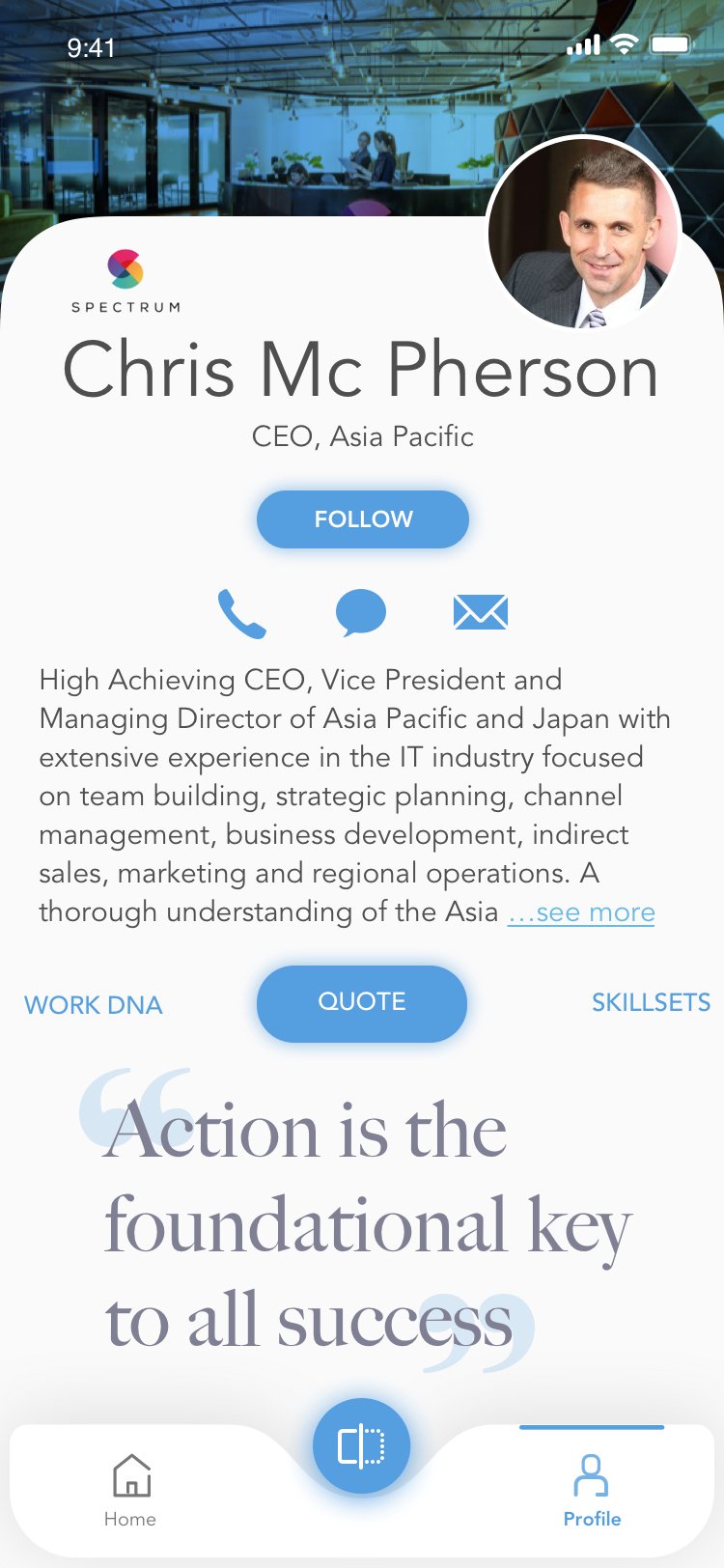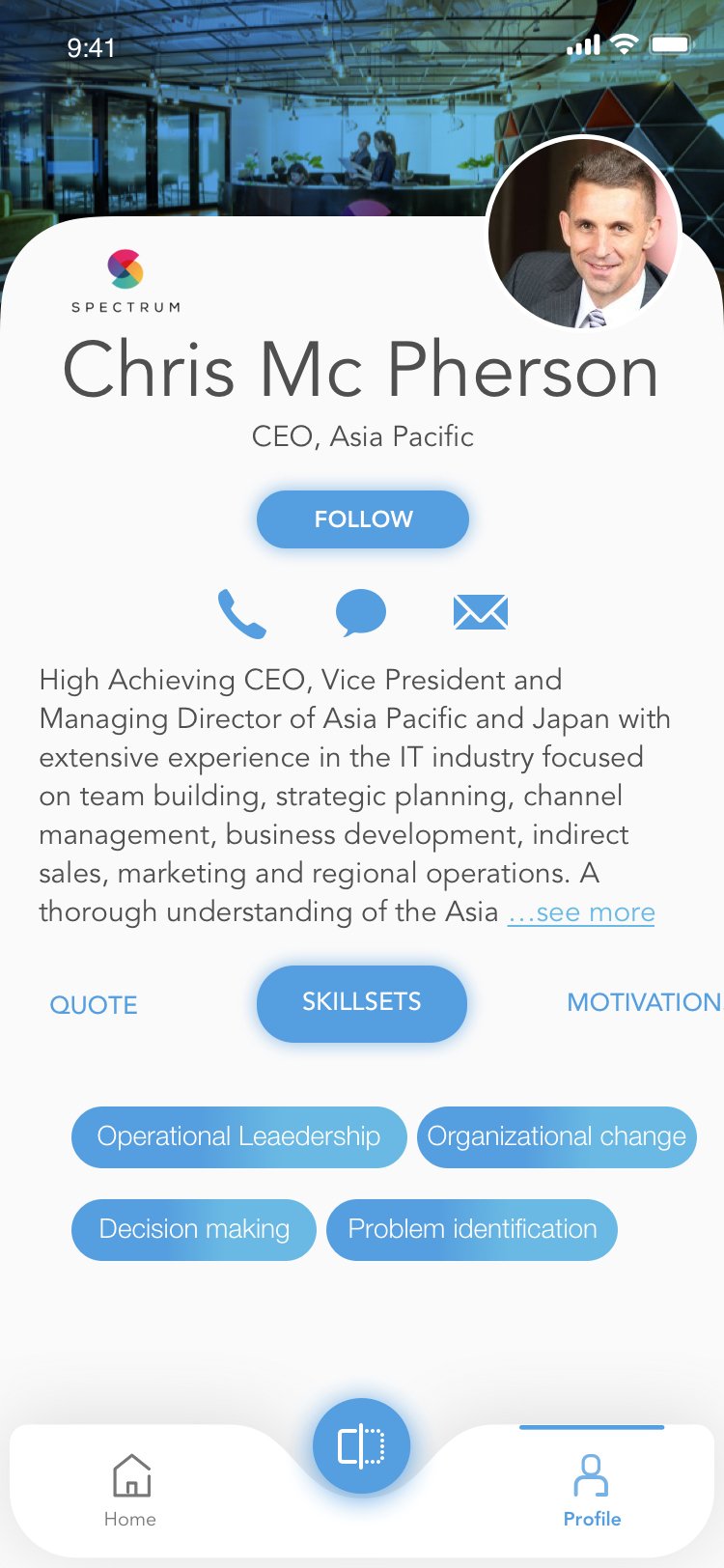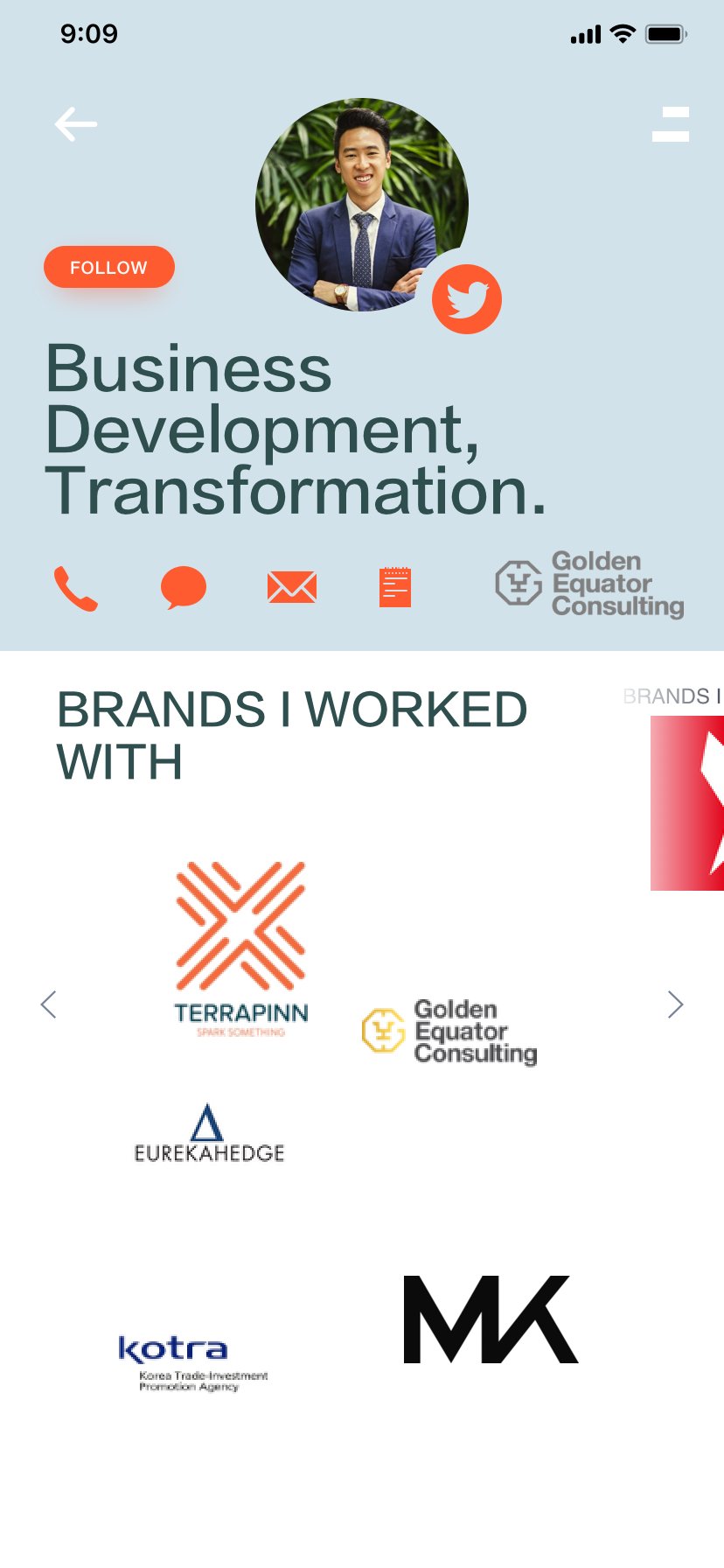Cerebro User profile
In this digital age, is perception reality.
-
Introduction
Brief: Redesign user profiles to help people share relevant info, build better connections, and control their networking experience.
Challenge: Most digital profiles are too shallow or too much—users need more control and flexibility.
Goals: Create profile formats that let users choose between quick sharing and rich storytelling.
-
Discovery Phase
Stakeholder interviews with founders and early adopters.
Business requirements: Must support both single-screen and long-scroll profiles, and let users control visibility.
User needs: Share what matters, decide who sees what, and present themselves authentically.
-
Problem Framing
Problem: Existing profiles don’t help users decide what to share or how to invest in connections.
Success: Profiles are flexible, easy to update, and users feel in control.
Constraints: Needs to look great on mobile, handle lots of info, and be easy to customize.
-
User Research
User interviews: Explored how people connect, what they want to share, and what they want to keep private.
Competitive analysis: Looked at LinkedIn, IG, FB, WhatsApp—lots of gaps in flexibility.
Market research: Control and privacy are top priorities for modern networkers.
-
Synthesis
User personas: “The Quick Sharer,” “The Deep Storyteller,” and “The Selective Connector.”
Journey mapping: From profile setup to sharing with a new contact.
Key insights: Some users want fast, focused sharing; others want a comprehensive story. Everyone wants control.
-
Solution Development
Info architecture: Two profile types—single-screen for focused sharing, long-scroll for full stories.
Wireframes & prototypes: Mocked up both formats, added sections for skills, brands, motivations, and personality.
Visual design: Clean, modular, with Neumorphism for a tactile, modern feel.
-
Testing
Usability testing: Ran with users—single-screen won for quick networking, long-scroll for in-depth sharing.
User feedback: Added more control over visibility, made sections more customizable.
Iterations: Refined layouts, improved navigation, and simplified editing.
-
Implementation
Handoff: Delivered annotated wireframes and visual assets to devs.
Dev collab: Weekly sprints to ensure smooth editing and sharing.
Go-to-market: Rolled out to pilot users, promoted as “profiles that fit your style.”
-
Results & Impact
Metrics: More profile completions, higher engagement, and positive user feedback.
User adoption: Users loved the control and flexibility—more people shared profiles, more meaningful connections.
Business impact: Helped Cerebro stand out in the networking space.
Lessons learned: Flexibility and control win—let users decide how they show up.
An individual who has a closed network is someone whose contacts all know each other.
Most of us tend to exist in closed networks, as it is simpler to maintain them.
Because we tend to hang around with people who know each other and if some of our friends don't know each other it is easier for use to let them meet one another then to keep them separated.
Oxford University psychologist, Robin Dunbar, hypothesized that there is a cognitive limit to the number of stable relationships one person can maintain.
The number that Dunbar proposed – 150 – has been known as “Dunbar’s Number” ever since.
It is a cognitive challenge to keep track of lots of people. we don’t have time to invest in each of these people.
To the extent that we can have a real relationship with them. It’s hard to compare the We have to invest in relationships, a relationship against the quality of outcome.
We have to do stuff with people in order to build a relationship with people.
The amount of time you need to invest is proportional to the quality of the relationship.
What if the ability the build a relationship with people could be better defined by designing a better profile that helped people decide on the time needed to build a quality relationship. This was the question we wanted to answer.
When we start to break down the reasons for a Profile:
What profile do users rely on (Linkedin ,IG, FB and Whatsapp)
How do they communicate within those profiles
Value of the profile to user
How do you use a profile (Jobsearching, Connecting, Recommendation, Social)
A Baseline type of profile needed to be created
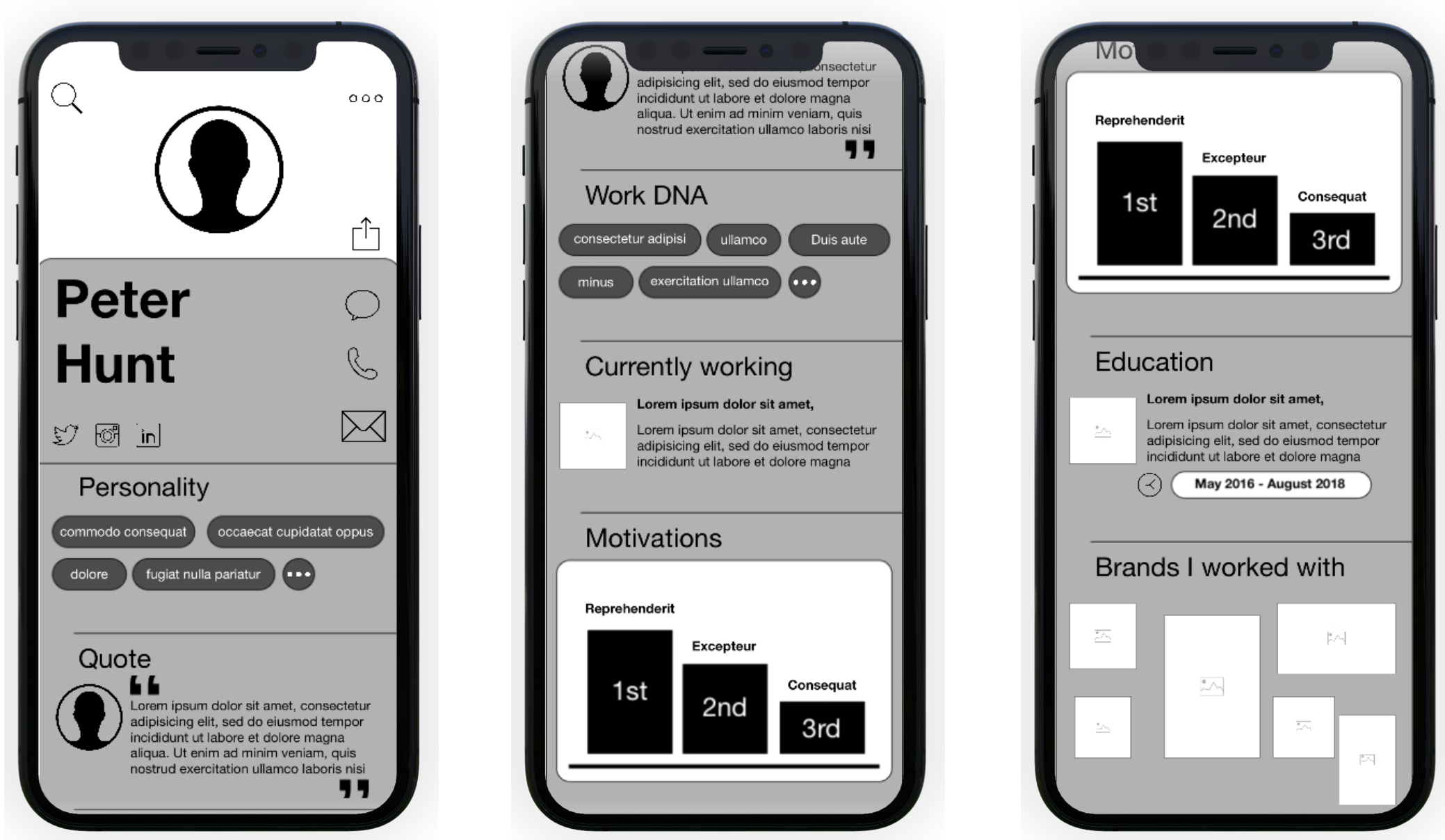

Using these baseline profiles, user interviews were conducted to find out:
How people connect
What they use to connect
What they want out of a network
Categories they want made public
Features needed
From this Mockus of the desired profile type were mockedup
The Single screen profiles were better spaced by users that could share what was most pertinent with who they needed to share.
The Long scroll profile were more favoured by users that wanted to share the fool tapestry of a user personal and professional life.
After the profiles had been shared with the users feedback was gathered below.


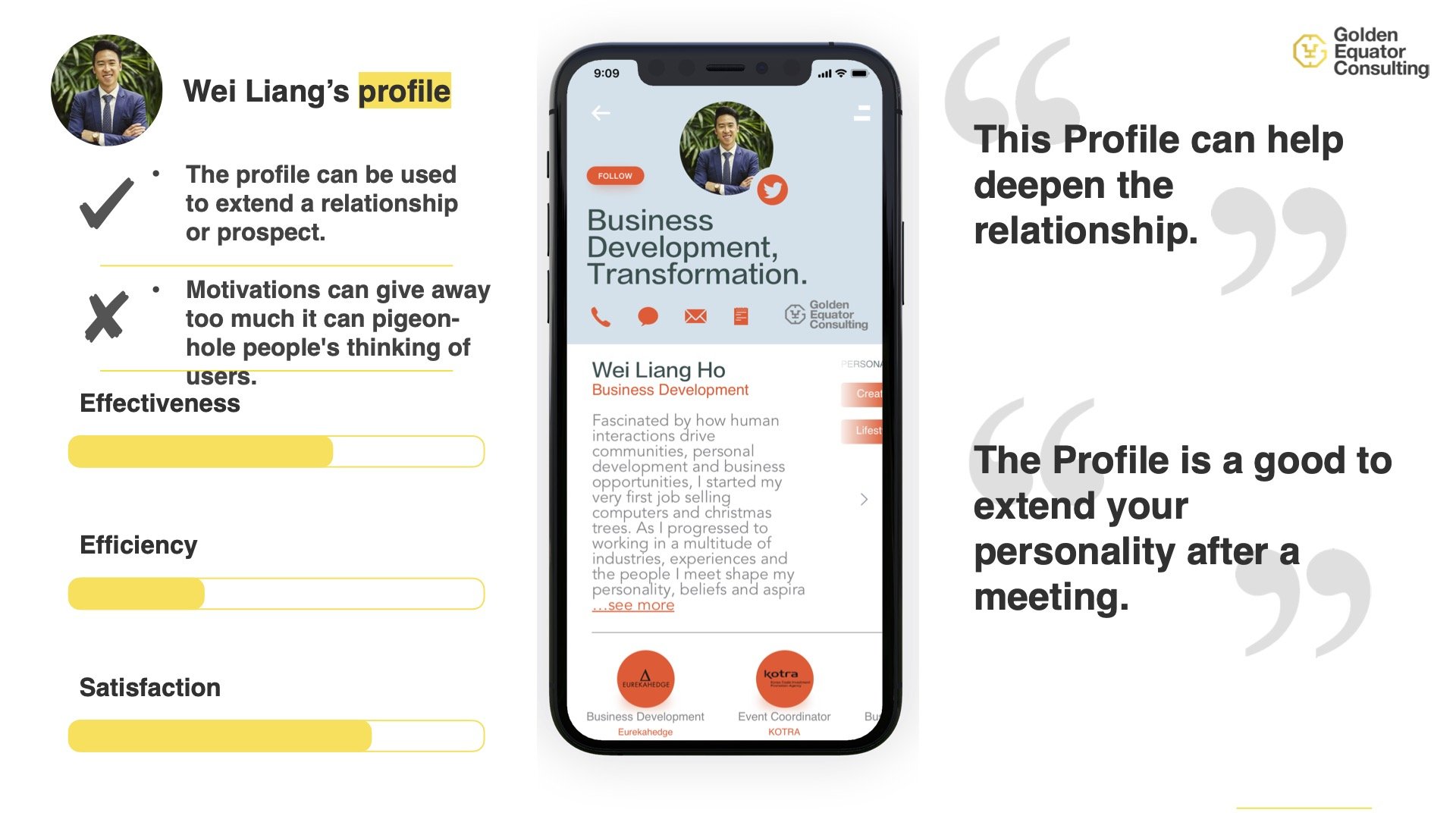


Taking the findings form the users feedback on respected profiles a redesigned profile was wireframes.
For the Redesign a Neumorphism style was was as its potential lies in the combination of physical elements with digital-native gestures. It’s like a perfect thermoformed plastic interface that doesn’t follow the physical rules.
For the visualizations of this style, I used the current paradigms and specs of Neumorphism. These components are part of a single surface, formed by bas-reliefs and high-reliefs.






